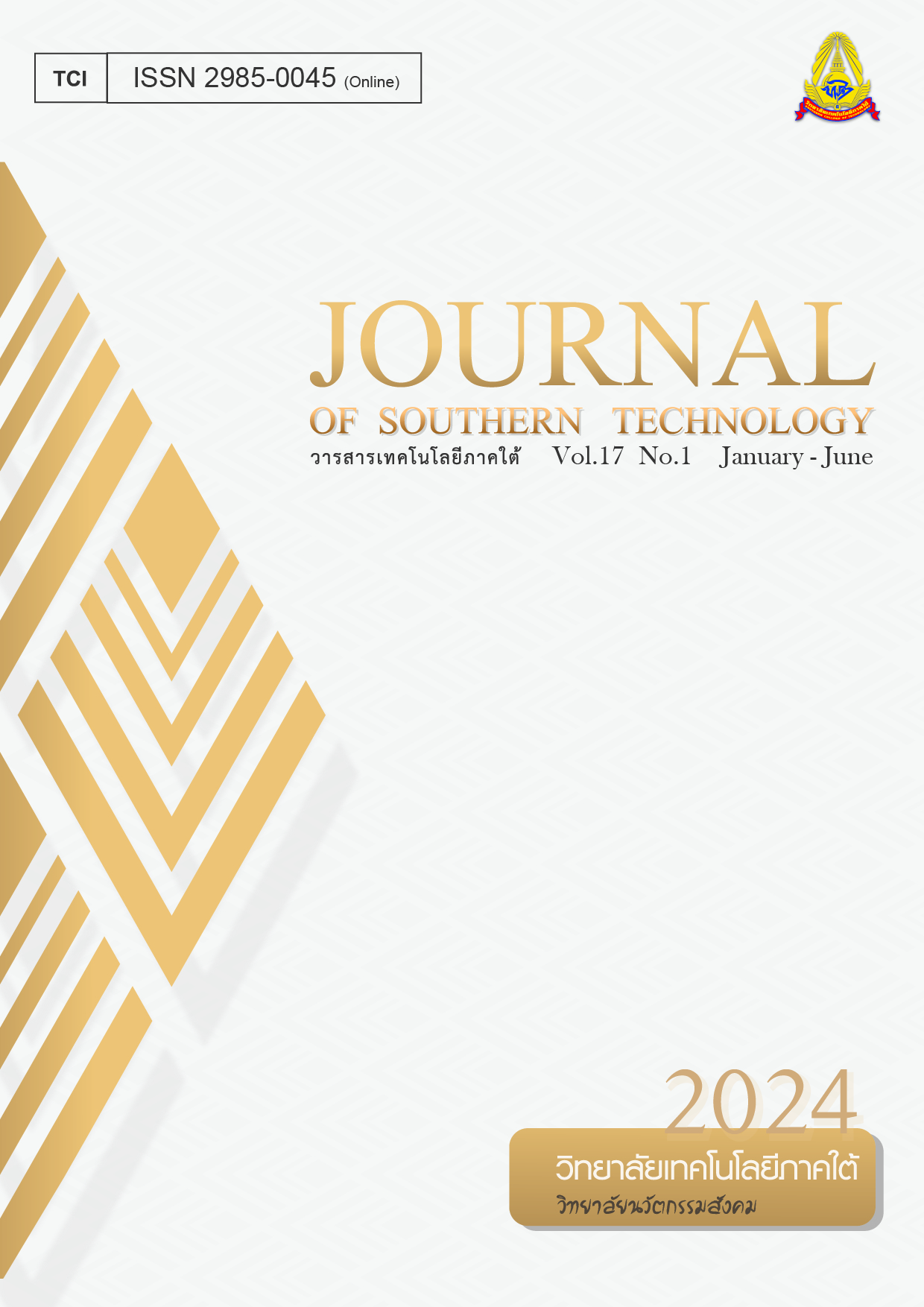The Development of the Information System to Control the Automatic Solar-Powered Aerator
Main Article Content
Abstract
The aerator is a machine used to add oxygen level in water, which will improve water quality and enhance the fertility of water resource. Nowadays most aerators depend on engines or electricity to add oxygen to water. As a result, the costs of energy and maintenance are high due to ongoing usage of the machine. This research aims to develop the information system to control the automatically computerized solar aerator. The design and development of the information system are based on the system development life cycle (SDLC). The efficiency of the system is evaluated both in the laboratory and in natural water resources by conducting the proportional testing to measure the accuracy of the system against predefined criteria with the minimum requirement of 90% at the significance level of .05 level of confidence. The research collected oxygen levels, pH levels, and temperature in the natural water resources for a total of 100 instances and found that the developed information system could control and commanded the machine to add oxygen when the oxygen level in the water fell below the required threshold. The developed information system could stop the aerator when the oxygen level reached or exceeded the required threshold. In addition, the developed information system could present results in a graphical format. For the efficiency evaluation of the information system in the laboratory, the sensors were conducted to measure oxygen, pH, and temperature 3 times. The measurements were accurate according to the predefined standards. When conducting the efficiency evaluation in the natural water resources, the developed information system could command the machine to operate and stop the air replenishment automatically. Oxygen (Z=L.33), pH levels (Z=2.66), and water temperature (Z=3.33) were measured accurately according to predefined criteria with the significance level of more than 90% at the .05 level of confidence. Farmers can utilize the automatic solar-powered aerator to treat waste water for aquaculture in remote areas where electricity is unavailable and/or to lower costs of electricity in the long term.
Article Details

This work is licensed under a Creative Commons Attribution-NonCommercial-NoDerivatives 4.0 International License.
-
Authors must agree to the journal publication rules and allow the editors to edit the manuscripts for publication.
-
Author’s right belongs to the author but Journal of Southern Technology holds the right of first publication and thus allow readers to use the article for the purpose of education but not commercial.
References
Al-Fuqaha, A., Guizani, M., Mohammedi, M., Aledhari, M., & Ayyash, M. (2015). Internet of things: a survey on enabling technologies, protocols, and applications. IEEE COMMUNICATION SURVEYS & TUTORIALS, 17(4), 2347-2376.
Eamsiriwong, O. (2007). Systems Analysis and Design. Bangkok: SE-Education. [in Thai]
Intamas, P., Krainara, A., Khemwong, T., & Boonraksa, P. (2022). Performance testing of solar turbine aerators controlled via mobile phone. Rattanakosin Journal of Science and Technology, 4(1), 43-53. [in Thai]
Kaewsuwan, T., & Sudsomboon, W. (2015). Design and develop for constructing the turbine aeration with solar energy. The 5th PKRU Conference (pp. 1497-1502). Phuket: Phuket Rajabhat University. [in Thai]
Kaewta, C., Khantikachenchart, C., & Thongsan, Y. (2018). The Development of embedded systems for automatic water quality measurement via online networking. Journal of Science and Technology, Ubon Ratchathani University, 25(1), 73-89. [in Thai]
Konglumpan, S. (2017). The dissolved oxygen alert machine in fish cages. The 9th Conference on Application Research and Development (pp. 109-112). Loei Thailand: Electrical Engineering/Electronics, Computer, Telecommunications, and Information Technology Association. [in Thai]
Muangplub, T., Chaisayun, I., & Tadsuan, S. (2017). The design and development of dissolved oxygen alarming instrument. SAU Journal of Science and Technology, 3(2), 41-52. [in Thai]
Musika, T., Pluem-arom, K., Kosaipat, P., Kheowree, T., & Watchanathepin, N. (2015). 3-Buoy water mill machine driven by the photovoltaic energy system. The 8th Thailand Renewable Energy for Community Conference (pp. 160-163). Pathum Thani Thailand: Rajamangala University of Technology Thanyaburi. [in Thai]
Nakhon Nayok Fisheries Provincial Office. (2021). What is Dissolved Oxygen in Water? Why is it Necessary to Measure Dissolved Oxygen in Water? Retrieved 4 28, 2023, from https://www4.fisheries.go.th/local/index.php/main/view_activities/16/116613. [in Thai]
Office of The National Broadcasting and Telecommunication Commission. (2017). Internet of Things Technology and Thailand 4.0 Policy. Retrieved 07 28, 2023, from https://www.nbtc.go.th/Services/quarter2560/ปี-2560/ไตรมาส-3-ปี-2560.aspx [in Thai]
Somchaiwong, N., Intayuang, T., Paoka, A., & Namaung, I. (2017). Design and building pH and dissolved oxygen control systems in fancy carp pond. Kasalongkham Research Journal Chiangrai Rajabhat University, 11(3), 327-341. [in Thai]
Sonsanam, T., Phoosomma, P., Nisapakul, P., & Intarachai, C. (2022). The aerator water for treatment using solar cell energy. Journal of Science Engineering and Technology Rajabhat Maha Sarakham University, 1(3), 57-66. [in Thai]
Suesuwan, W., Jittavisuttikul, P., & Wasuri, B. (2022). Development of a networked real-time water quality monitoring module. ECTI Transaction on Application Research and Development, 2(2), 7-13. [in Thai]
Termkla, R., Prathaithep, W. B., & Khuntong, T. (2019). Determination effectiveness of solar energy aerator. Industrial Technology Journal Surindra Rajabhat University, 4(3), 1-8. [in Thai]

